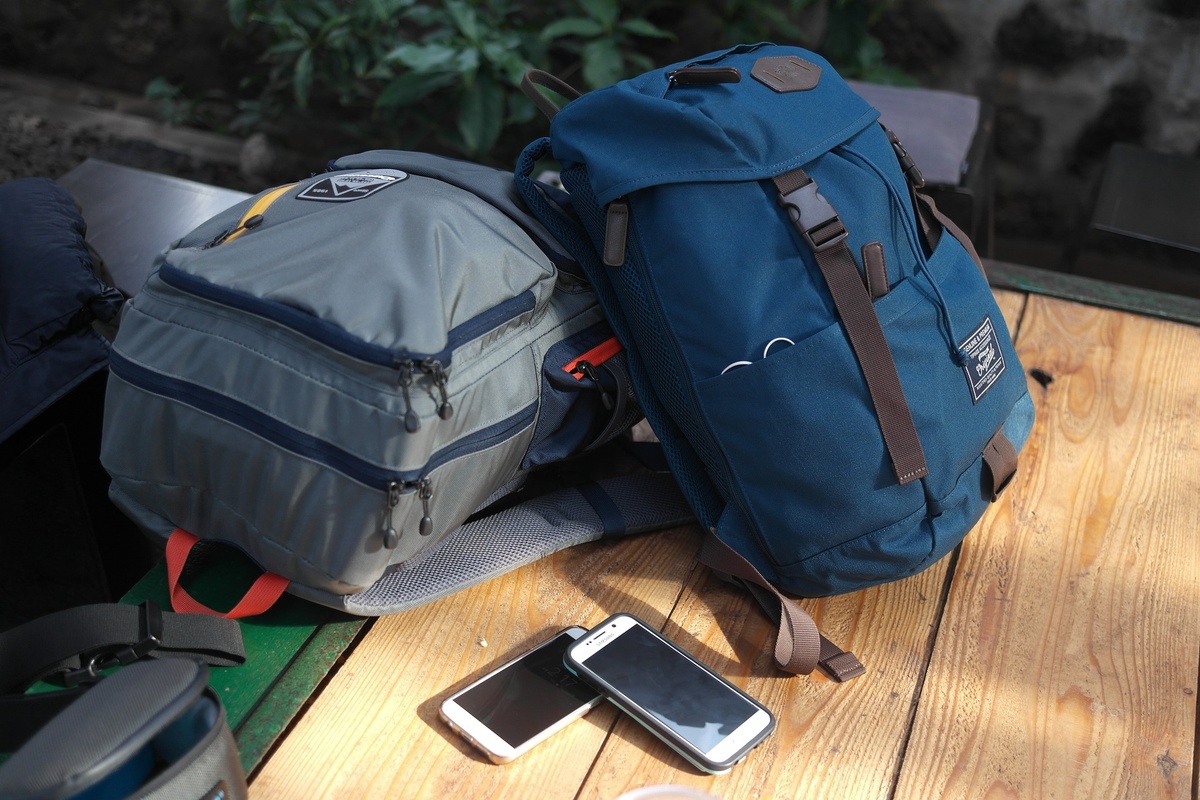
The Ultimate Guide to Flying with a Backpack on Plane
Flying with a backpack is an increasingly popular choice among travellers, offering flexibility, efficiency, and ease of movement. Whether you're jetting off on a quick city break or embarking on a long-haul adventure while packing light, choosing the right travel backpack for a plane can make all the difference to your journey. In this article, we'll cover everything you need to know about selecting and using a travel backpack as a hand luggage, including insights into flight cancellations, delays, overbooking, and lost luggage, to ensure your travel experience is as smooth as possible.
Choosing The Best Backpack for Air Travel
Choosing the right backpack for your journey is not just about finding a bag to store your belongings; it's about selecting a travel companion that suits your style, needs, and the nature of your trip. With countless options available, focusing on a few key aspects can help simplify the decision-making process.
Determine the Purpose of Your Backpack: The first step is to consider how you plan to use your backpack. Will it serve as your primary luggage for a minimalist trip, or do you need a large travel backpack that can accommodate extra gear for outdoor adventures? Perhaps you're looking for a versatile hand luggage or cabin size backpack that can double as a daypack once you reach your destination. Identifying the purpose will guide you towards the appropriate size and features.
Size and Capacity Considerations: While a large travel backpack offers ample space, it's crucial to remember airline carry-on backpack restrictions. Many airlines allow a carry-on 40 x 20 x 25 backpack, but this can vary. A backpack of around 40 litres is often sufficient for a week's travel, balancing between capacity and the ability to fit in overhead compartments.
Comfort and Fit: A travel backpack can become burdensome if it's uncomfortable to wear, especially when navigating airports, cities, or rugged terrains. Look for backpacks with adjustable shoulder straps, a padded back panel, and a hip belt.
Material and Durability: The right backpack should withstand the rigours of travel. Materials such as high-denier nylon and polyester offer durability and water resistance, protecting your belongings from the elements. Another thing to consider is the quality of zippers, buckles, and seams, as these are common failure points.
Accessibility and Organisation: A well-designed backpack will help keep your items organised and easily accessible. Features like multiple compartments, internal pockets, and a front-loading design (as opposed to top-loading) can make it easier to pack and find your belongings.
Security Features: Security is a paramount concern while travelling. Backpacks with lockable zippers, hidden pockets, and slash-proof materials can provide peace of mind in crowded places or when using public transportation.

Image by jackmack34 from Pixabay.
Size and Capacity of Travel Backpacks
The importance of size and capacity in selecting a travel backpack for a plane cannot be overstated, as it directly impacts both your travel convenience and compliance with airline regulations, especially if it’s used as a carry on backpack or rucksack.
Understanding Airline Restrictions
Most airlines specify maximum dimensions for carry-on luggage to ensure that all passengers can fit their belongings in the overhead compartments or under the seat in front of them. Adhering to these dimensions helps avoid unexpected check-in fees or the inconvenience of having to check your backpack at the gate.
Balancing Size with Capacity
The ideal backpack for a plane maximises its use of space within these dimensional constraints. Look for a backpack designed to offer the best balance between size and capacity, often achieved through streamlined designs and smart internal organisation. A capacity of 30 to 40 litres is typically sufficient for short trips and carefully packed longer journeys. It can fit a surprising amount of gear while still being compact enough to meet carry-on requirements, such as requirements for an under-seat backpack or hand luggage rucksack.
Choosing the Right Capacity for Your Trip
The length of your trip and the type of items you need to pack play a crucial role in determining the best backpack size for you. For weekend getaways or short business trips, a smaller backpack with a capacity of up to 40 litres may be perfect and can serve as a cabin size backpack. For longer journeys or if you need to carry bulkier items like winter clothing or camping gear, consider a backpack with a capacity of up to 60 litres. Remember, larger travel backpacks, while offering more space, may need to be checked in if they exceed carry-on limits.
Expandability and Flexibility
Some travel backpacks feature expandable compartments that allow you to increase their capacity when needed. This feature is particularly useful if you plan to bring back more than you took, such as souvenirs or purchases made during your trip. However, ensure that the backpack can still comply with carry-on restrictions when expanded.
Compression Straps and Packing Cubes
To maximize your travel backpack's capacity, look for models with external or internal compression straps. These straps help reduce the backpack's bulk by compressing your clothes and other soft items, making it easier to fit into tight spaces. Pairing your backpack with packing cubes can further enhance its organization and capacity, allowing you to pack efficiently and access your belongings with ease.
Luggage & Backpack Problems when Travelling
Dealing with lost luggage or damaged backpacks are scenarios that can test any traveller's patience and resilience. These issues, while not as frequent as delays or cancellations, pose significant inconvenience and can disrupt your travel plans. However, knowing how to navigate these situations can help mitigate their impact on your journey.
Luggage Issues and the Montreal Convention: Protecting Your Rights
Luggage issues, such as damage, delay, or loss, are covered by the Montreal Convention, ensuring passengers within the EU and those traveling internationally have consistent rights. All signatory countries, including EU member states and the United States, adhere to these regulations. Here are the types of baggage issues included:
Damaged Baggage
If your luggage (checked or carry-on) is damaged while in the care of the airline, they must repair or replace it. Follow these steps to handle damaged baggage:
Keep Your Documents: Hold onto your boarding pass and checked luggage receipts. If you don’t have your boarding pass, use any flight document with your booking reference number (a six-digit code including letters and numbers).
Report Immediately: Report the damage before leaving the airport after receiving your bags. If this isn't possible, check your airline’s policy online for reporting deadlines.
Fill Out a Damage Claim Form: Also known as a Property Irregularity Report (PIR), this form is essential for processing your claim. Some airlines provide these forms online.
Present Your Bags for Inspection: If possible, do this at the airport. The airline will negotiate a solution with you, whether to repair the damage, replace the items, or otherwise compensate you.
File a Claim for Damaged Items: Note that airlines have exceptions to what they will cover, but if you can provide a compelling case, it might be worth your time.
Delayed Baggage
If your luggage doesn't arrive on time and you need to purchase essential items, the airline must reimburse you. Here's how to handle delayed baggage:
Keep Your Documents: Hold onto your boarding pass and checked luggage receipts.
Report Missing Bags: Notify the airline as soon as possible, ideally before leaving the airport. Check your airline’s policy for reporting deadlines.
Fill Out a PIR: You’ll be given a file reference number for your case—keep this safe.
Request a Bag Fee Rebate: If you were charged a baggage fee, ask for a rebate. Policies vary, so insist on cash if possible, or add it to your reimbursement claim.
Track Your Luggage: Use your file reference number to track your bags online.
Keep Receipts for Essential Items: Save receipts for necessary items like toiletries and underwear.
File a Claim: Most airlines require claims to be filed within 45 days of your flight, even if your bags haven't arrived yet. Check your airline’s policy.
Lost Baggage
If your baggage is lost, the airline must compensate you for the suitcase and its contents. Follow these steps:
Document Your Claim: Assemble a detailed list of contents for your lost bags. Receipts or other proof of the items are helpful.
Understand the Timeline: Your bags are considered lost 21 days after they should have arrived—or earlier, if the airline admits they are lost.
File a Claim: Most airlines will compensate you for the lost items, though there are exceptions. Ensure you file your claim promptly according to your airline’s policy.
By understanding your rights under the Montreal Convention, you can ensure that any luggage issues you encounter are handled promptly and fairly, minimizing the inconvenience of damaged, delayed, or lost baggage.
Flight Delays and Cancellations when Travelling
While inconvenient, these incidents are not without recourse, especially when you're well-informed about your rights as a passenger.
Understanding Your Rights
The cornerstone of passenger rights in the EU, including the UK for flights with EU-based airlines, is Regulation (EC) No. 261/2004. This regulation provides a framework for compensation and assistance to passengers in the event of long delays, cancellations, and denied boarding due to overbooking. Knowing the details of this regulation is crucial for asserting your rights and seeking fair treatment.
Eligibility for Compensation
The entitlement to compensation depends on several factors, including the reason for the delay or cancellation, its duration, and the flight distance. For delays, the flight must be more than three hours late at the destination for passengers to be eligible for compensation. The amount varies from £213 for shorter flights up to 932 miles, £341 for flights within the EU over 932 miles, and between EU and non-EU airports between 932 miles and 2174 miles, and £513 for flights not falling into the earlier categories.
Exceptions to the Compensation Rules
It's important to note that airlines are not liable for compensation in cases of extraordinary circumstances beyond their control, such as severe weather conditions, strikes, or air traffic control restrictions. However, the definition of extraordinary circumstances can sometimes be a grey area, and airlines must prove that the delay or cancellation was due to factors beyond their control.
Claiming Compensation
If you find yourself facing a flight delay or cancellation, the first step is to approach the airline for information and confirmation of the reason for the disruption. Keep all your travel documents, such as boarding passes and booking confirmations, as these will be necessary when filing a claim. Additionally, record the actual arrival time at your destination and any communication from the airline regarding the delay or cancellation.
Additional Assistance
Apart from compensation for delays or cancellations, passengers are also entitled to certain forms of assistance from the airline during the wait. This includes meals and refreshments proportionate to the waiting time, two free phone calls or emails, and, if necessary, accommodation and transport between the airport and the place of accommodation.
Handling Overbooking Situations
Overbooking flights is a practice airlines use to compensate for the likelihood of no-shows. However, this can lead to situations where there are more passengers than seats at boarding time. If you're denied boarding due to overbooking, the airline is obligated to seek volunteers willing to take a later flight in exchange for benefits or compensation. If there are not enough volunteers and you are denied boarding involuntarily, you have rights under EC 261, including compensation, a full refund, or re-routing.